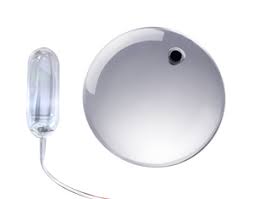In Cincinnati, Ohio our physicians at JourneyLite have done many ReShape and Orbera insertions over the years. Gastric balloons have been a significant breakthrough in the field of non-surgical weight loss, and now a new device, the Obalon “swallowable” gastric balloon is out.
Overall, advantages of gastric balloons include:
- lower risk than surgery
- lower cost than surgery
- faster recovery than surgery
- does not permanently alter the patient’s anatomy
- can be a great kickstart for a patient who is not a candidate for surgery to make a lifestyle change
Up until now, in the US at least, a gastric balloon has required two procedures: one endoscopy (with anesthesia) to insert the balloon, and then one endoscopy (also with anesthesia) to remove it 6 months later. The Obalon gastric balloon changes this equation for the better, as it can easily be placed in the office with no anesthesia and no downtime.
Both ReShape and Orbera gastric balloons have more similarities than differences. Both of them require two endoscopies, both of them are filled with saline, and both of them have a reasonably high rate (8%-16%) of intolerance, which requires early removal of the device. See Table 1 below for a list of similarities and differences between these devices.
Obalon is a definite game-changer in the gastric balloon world. Obalon patients receive a total of 3 smaller balloons over a total of 8 weeks. Each balloon insertion is a simple process: the patient comes into the office, stands in front of an xray machine, and swallows a capsule with a tiny catheter attached to it. The physician uses xray to confirm that the capsule is in the stomach, and then it is inflated with a special cannister of gas up to 250cc. The patient comes back then every 4 weeks until all 3 balloons have been placed.
Obalon Uninflated & Inflated

This technique has some major advantages over traditional gastric balloons. Most importantly, increasing the total balloon volume gradually over time results in much better tolerance than inserting an Orbera or ReShape and immediately inflating it up to 900cc’s. This results in much less nausea and vomiting upon each balloon placement, allowing most patients to return to work the next day.
Their initial trial, SMART, showed excellent safety profile with no balloon leaks or early removal. Weight loss was roughly double that of the control group.
The development of less-invasive treatments such as Obalon will hopefully allow physicians to attack the disease of obesity much earlier, avoiding major disease like type 2 diabetes and sleep apnea.
Click here to schedule an Obalon “swallowable” gastric balloon consultation!
Table 1
One balloon is placed initially, followed by 2 more insertions (every 4 weeks) for a total of 3 balloons and 750cc. Obalon differs from Orbera and ReShape in several ways:
- no anesthesia is required for insertion of the Obalon balloons
- no downtime is required after insertion
- the sequential placement of balloons results in much better patient tolerance (i.e. less nausea & vomiting)
- fewer Obalons need to be removed early due to balloon intolerance
- the Obalon balloon is filled with gas, not saline
Similarites include:
- similar total balloon volume (in between Orbera [600cc] and ReShape [750-900cc]
- similar physiologic function of balloon(s), occupying space in the stomach to reduce hunger and help the patient get full on smaller portions
- similar requirements for success-patient must make meaningful changes in diet/exercise habits and be compliant with all follow-up visits
- similar in-stomach balloon duration of 6 months
- similar balloon removal process requiring sedatation and endoscopy

